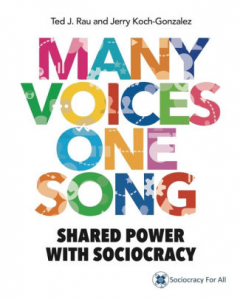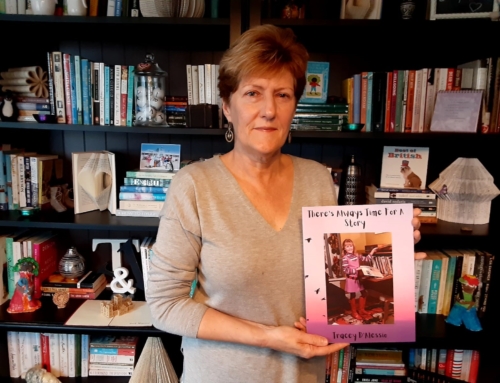Written by Kathleen Livingston, member of Cohousing Hamilton
Democracy is the most common governance model in North America and one about which we likely all have some knowledge. Sociocracy, or Dynamic Governance, is another governance model that has some unique elements that are compelling to those who would involve themselves in the development of an intentional community such as Cohousing Hamilton. Consider these few points:
- Every voice is heard
The entire structure of sociocracy – from the basic meeting, to the most important decisions that need to be made – ensures that every member’s voice holds equal value. Nobody is left out, nobody can be shut out.
This is done through an effective system of “Rounds” used in meetings that work somewhat like the Aboriginal Talking Stick. The meeting Facilitator is charged with making sure that each meeting participant is given the opportunity to contribute to the discussion. Each has a say in achieving consent to a decision. This is one of the most evident and obvious mechanisms for ensuring the full participation of all members.
- Everyone knows everything if they want to
Transparency and communication are fundamental tenets of sociocracy. In support of these, every working group/committee – referred to in sociocracy as “Circles” – is linked to its “parent” circle and to the management circle by two fully participant members. That is, each circle assigns two of its members to participate fully, as voting members, in the Circle from which it evolved. One of these members is charged with the task of relaying information from the parent circle and the other is charged with relaying information to the parent circle. This holds for the double-link with the management circle as well. This double-linking system ensures that the information loop is comprehensive and smooth-operating. It also ensures that no one circle can over-power another or interfere with the work of another circle. This is important. See the next point.
- Empowered Circles
Distributed power is another key tenet of sociocracy and quite distinct from democracy. Distributed power in a governance system puts people in charge of their own destiny; it also requires their participation.
While the Mission Circle is charged with ensuring that the organization stays true to its Mission, and the General Circle oversees the coordination of the working circles, each working circle has its agreed Aim(s) and Domain and is fully authorized to undertake the work it needs to achieve its aims. It need not return for authorization to act from any other circle. The double-linking system will keep other members abreast of developments and imminent decisions.
- Continuous Improvement
Sociocracy seeks to improve its operations continuously, to evolve as it grows within an organization. Another built-in mechanism supports this objective.
Every decision, every role, every structure within this governance model is assigned a review date – a date at which members will assess the effectiveness of the item under question and determine if modifications are needed. This group review process is done openly, honestly and with the intent to improve things as needs emerge and evolve. Every participant holds an equal voice in evaluating and deciding what needs to be done, if anything, and how long it will be until the next review is triggered.
- Consent Not Consensus
Another unique element of sociocracy is the concept of “Consent”, which must be distinguished from “Consensus”.
Consensus is defined by the agreement of ALL present to a decision point, with zero tolerance for dissent or disagreement. It sounds lovely, but it can be a monkey-wrench in the works of a governance system. Many organizations have and continue to experience operational paralysis in trying to achieve consensus.
Consent approaches decision-making from a more realistic perspective, recognizing that not all options will be perfect, and that’s okay. The objective is “Good enough for now; safe enough to try.” In making decisions through a consent model, rounds are engaged to clarify any points of the proposal – a.k.a. “clarifying questions”. When all clarifying questions are handled and no further questions emerge, each member, again through a round, gets to “consent, voice concern, or object” to the proposal.
In order for this to work, it is essential to understand the concept of “Range of Tolerance”, for it is within this understanding that consent is achievable. The proposal may not meet every wish and desire of every member present. It may not even answer every aspect of the problem it proposes to solve. Nonetheless, after a full examination with everyone contributing their piece to the discussion, unless a member identifies some risk to the aim(s), then no objection exists. In other words, it is “safe enough to try”. Understanding that it will be reviewed at an agreed date will make “good enough for now” quite an acceptable approach, allowing forward momentum on solving the identified problem.
While there are other elements of sociocracy that contribute to its effectiveness, understanding the above points contributes to a fundamental understanding of its distinguishing features relative to democracy, and insight into the benefits it offers to a collaborative enterprise such as Cohousing Hamilton.
Winston Churchill once suggested, “…that democracy is the worst form of Government except for all those other forms that have been tried from time to time.…” Possibly, Mr. Churchill, but I suspect that you never tried sociocracy!
As members of Cohousing Hamilton, we are still on the learning curve of virtually every aspect of building this community, and our command of sociocracy is no exception. We learn how to do this better every day. Join us! Learn with us! Build with us!
Resources
- Cohousing Hamilton
- Rau, Ted (2109). Sociocracy as a Solution for Community Organizing.
- Rau, Ted, and Koch-Gonzalez, Jerry. Many Voices, One Song. Shared power with sociocracy. SoFA. Overview of Sociocracy—What is Sociocracy.

- Sociocracy for All – main website






